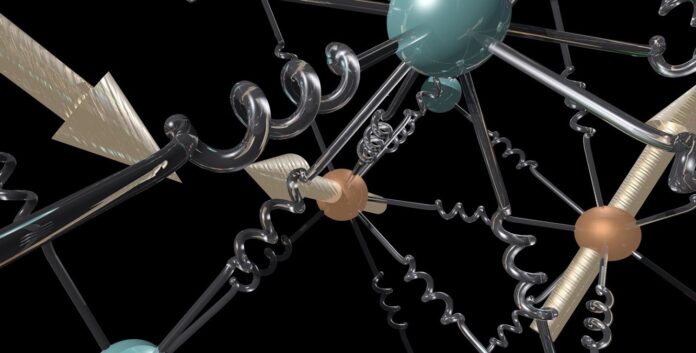The phenomenon of certain alloys not changing size when heated, has puzzled scientists for decades. Unlike most materials that expand or contract with temperature changes, these unique alloys exhibit a fascinating behavior where their dimensions remain nearly constant under varying thermal conditions. Recently, a team of researchers conducted a study to unravel the mystery behind this behavior and shed light on the underlying mechanisms.
Thermal expansion is a common property observed in nearly all materials, which expand with increasing temperature and contract when cooled. This phenomenon has practical applications, from hot air balloons to thermostats. It shapes the design of structures like railroads and bridges.
The expansion occurs due to increased atomic vibrations, leading to more significant space between atoms and a larger overall size. However, exceptional metal alloys called Invars defy this norm, remaining almost unchanged in size and density across a wide range of temperatures. These unique materials hold potential for specialized applications where dimensional stability is crucial.
Stefan Lohaus, a graduate student in materials science and lead author of the new paper, said, “It’s almost unheard of to find metals that don’t expand. But in 1895, a physicist discovered by accident that if you combine iron and nickel, each of which has a positive thermal expansion, you get this material with very unusual behavior in a certain proportion.”
In a recent study published in Nature Physics, researchers from the lab of Brent Fultz have unraveled the secret behind the anomalous behavior of Invar alloys. These unique alloys, known for their stability in size and density across varying temperatures, have puzzled scientists for over a century.
The research team found that the steadiness of at least one Invar is related to its magnetism. Only specific alloys that are ferromagnetic and can be magnetized exhibit this behavior. By studying both magnetism and atomic vibrations, the researchers concluded that the activity of the electrons in these alloys is responsible for counteracting the expected thermal expansion, making them highly useful in applications that demand extreme precision, such as crafting parts for clocks, telescopes, and delicate instruments.
The Caltech research team has utilized the “Maxwell relations” to independently measure thermal expansion caused by magnetism and atom vibrations in Invar alloys. By conducting experiments at the Advanced Photon Source in Argonne National Laboratory, they measured small Invar samples’ vibrational spectra and magnetism within a diamond anvil cell. The measurements revealed a delicate balance between the thermal expansion from atom vibrations and magnetism, which changed with temperature and pressure while maintaining their equilibrium.
The team’s accurate theoretical approach demonstrated how interactions between vibrations and magnetism contributed to this balance, suggesting potential applications in understanding thermal expansion in other magnetic materials and developing materials for magnetic refrigeration. The experimental setup involved using powerful X-rays to interact with the atoms’ vibrations in the squeezed Invar alloy, allowing precise measurements of its thermal behavior.
In their groundbreaking research, the Caltech team devised an innovative experimental setup using a diamond anvil cell and sensors to detect interference patterns created by electrons’ spin states in an Invar sample. They made a significant discovery by observing both the atomic vibrations and spin states of the electrons as the sample’s temperature increased.
At lower temperatures, more electrons shared the same spin state, pushing their parent atoms apart. As the temperature rose, some electrons’ spin states flipped, causing them to cozy up to neighboring electrons. Due to changing spin states and the expansion from atomic vibrations, this contraction perfectly balanced each other out, leading to the Invar maintaining its size. This “Invar effect” has puzzled scientists for over a century, and this study finally provides a holistic explanation.
Journal Reference:
- Lohaus, S.H., Heine, M., Guzman, P., et al. A thermodynamic explanation of the Invar effect. Nature Physics.DOI:10.1038/s41567-023-02142-z.
